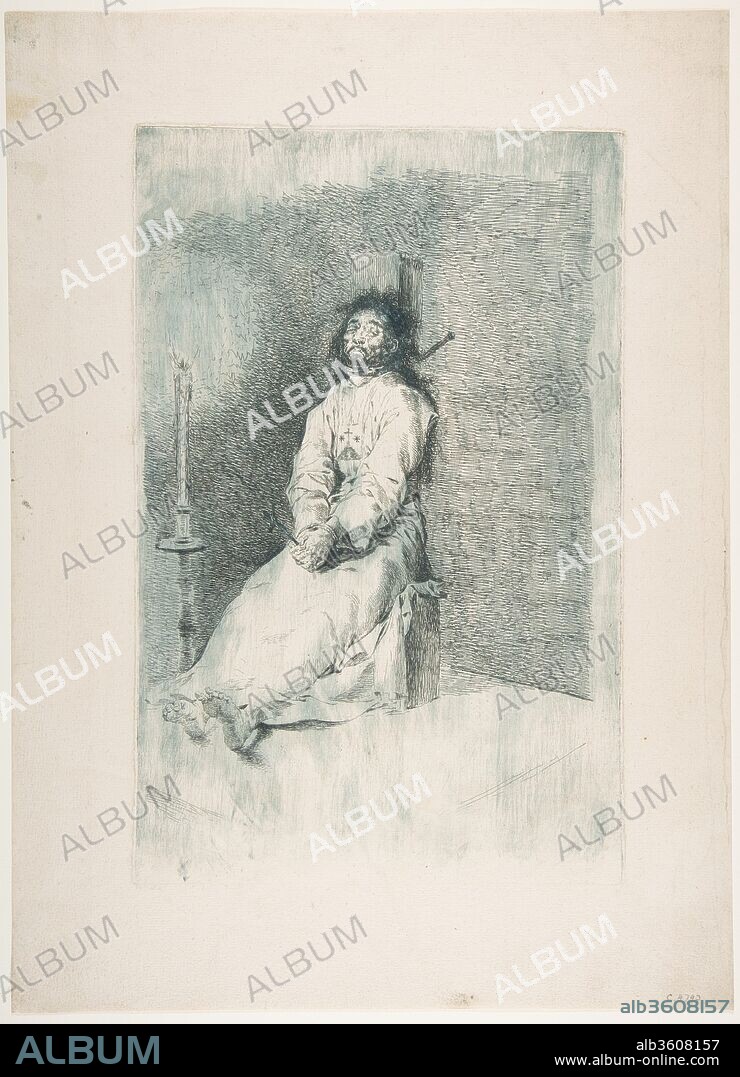alb3608157
GOYA (FRANCISCO DE GOYA Y LUCIENTES). The Garroted Man (El agarrotado)

|
Zu einem anderen Lightbox hinzufügen |
|
Zu einem anderen Lightbox hinzufügen |



Haben Sie bereits ein Konto? Anmelden
Sie haben kein Konto? Registrieren
Dieses Bild kaufen.
Nutzung auswählen:

Titel:
The Garroted Man (El agarrotado)
Untertitel:
Siehe automatische Übersetzung
The Garroted Man (El agarrotado). Artist: Goya (Francisco de Goya y Lucientes) (Spanish, Fuendetodos 1746-1828 Bordeaux). Dimensions: plate: 12 7/8 x 8 7/16 in. (32.7 x 21.4 cm)
sheet: 17 1/16 x 12 5/16 in. (43.3 x 31.2 cm). Date: ca. 1778-80.
This is one of Goya's earliest etchings, made when he was exploring the technique. It shows a man being killed by a garrotte, the standard civilian method of execution in Spain of which there were several methods. That depicted here shows the prisoner sat on a stool with his back to the post, wrists bound and a hinged iron collar closed around his neck. It is a strange subject for a print, perhaps addressing judicial abuse and it is hard to guess what sort of audience Goya anticipated. Goya might not have intended it for wide distribution as it was made when he was beginning as a printmaker and exploring subjects that interested him personally. Goya's unflinching depiction of this method of execution anticipates his brutally frank representation of conflict in the 'Disasters of War' began over thirty years later, in 1810. This etching, printed in blue ink is a unique working proof. The tone imparts an eerie sense to the composition, suggesting an interior nocturnal setting.
Technik/Material:
Etching printed in blue ink; working proof
Museum:
Metropolitan Museum of Art, New York, USA
Bildnachweis:
Album / Metropolitan Museum of Art, NY
Freigaben (Releases):
Bildgröße:
2984 x 4128 px | 35.2 MB
Druckgröße:
25.3 x 35.0 cm | 9.9 x 13.8 in (300 dpi)
Schlüsselwörter:
 Pinterest
Pinterest Twitter
Twitter Facebook
Facebook Link kopieren
Link kopieren Email
Email
